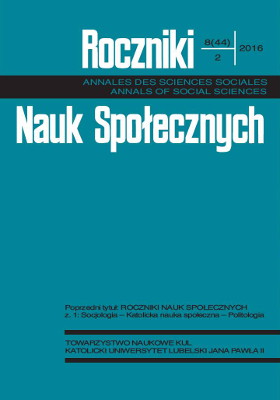Czy nauczyciele myślą źle o eurosierotach? Stereotypy iuprzedzenia nauczycieli wobec dzieci sezonowych migrantów
Do Teachers Misthink about Euroorphans? Stereotypes and Prejudices of Teachers Toward Seasonal Migrants' Children
Author(s): Sławomir TruszSubject(s): Social Sciences, Sociology, Migration Studies
Published by: Towarzystwo Naukowe KUL & Katolicki Uniwersytet Lubelski Jana Pawła II
Keywords: migration; euroorphanhood; stereotype; stigma; education
Summary/Abstract: The term euroorphanhood (and/or euroorphan) acts as a negative label and affects a range of social and psychological processes. Within a school class individuals who are attributed the stigma of euroorphanhood may become a target of teacher's prejudice and can be perceived in stereotypical way. These assumptions have been investigated by asking the teachers of elementary and middle schools (n = 812) to point those features that can be attributed to a typical euroorphan (girl vs. boy, younger vs. older), and then to estimate the euroorphans' attributes in terms of the five domains of human activity: cognitive, social, emotional, task-oriented, and appearance. Frequency analysis of the adjectives used to depict each of the four categories of euroorphans, and factor analysis revealed that the euroorphanhood is associated mainly with unfavorable features that can be connected to externalizing and internalizing disorders, and that the stereotypical image of the euroorphan varies significantly according to gender and age of the depicted child. The results have been discussed by reference to the cognitive connectionism, the stigma and the social constructivism theories.
Journal: Roczniki Nauk Społecznych
- Issue Year: 44/2016
- Issue No: 2
- Page Range: 67-103
- Page Count: 37
- Language: Polish

